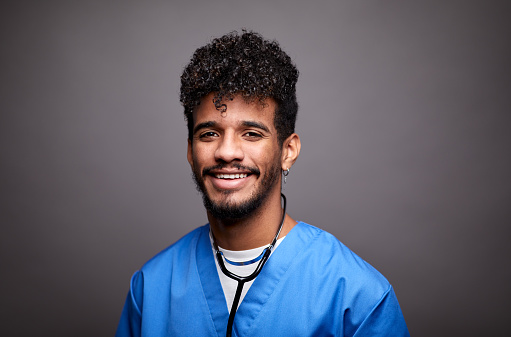
How to get in to NHS Medicine Training as an IMG | A Step by step guide
30 Sept, 202317 Minutes
The NHS offers IMG doctors the chance to join specialty training programmes, where they can train in a specific specialty and work towards becoming a CCT qualified Consultant. This is often the number 1 goal for international Medicine doctors as the NHS training is recognised as some of the best in the world. Medicine specialisms are some of the most competitive in the NHS so it’s no surprise that the road to getting on to a programme isn’t easy - but that doesn’t mean it isn’t doable.
In the NHS, medicine specialty training covers twenty-nine specialties in total, however they all follow the same overall pathway for training. In this guide, we’ll walk you through the journey to give you the best chance for success.
An Overview of The Road to Medicine Training
We’ll cover off each step in greater detail but, before diving deeper into how to access the NHS medicine training programmes, here is a quick look into the journey:
1: Getting GMC Registered
The very first thing you must do is get GMC registered. In the UK, all doctors need to be on the GMC register before practising medicine, so this isn’t a step you can bypass. Getting on the GMC register involves submitting evidence that you are capable of practising medicine, which includes proof of internship, proof of knowledge/skills, and your PMQ. For proof of knowledge/skills, PLAB is the faster option that will get you into ST1/CT1 level, whereas MRCP allows access at ST3+ level.
2: Starting an NHS Service Job
You might think that once you have GMC Registration it’s as simple as applying to training however most IMGs start out in what’s called a service job. These posts don’t count towards training; instead, they allow you to build up experience in the NHS which will make your training application far more compelling. After using PLAB to get GMC registered, you can apply for CT1/ST1 level service roles (usually called SHO, Junior Clinical Fellow or Junior Trust Grade). However, if you took the MRCP pathway to GMC registration, your non-training job can start at the ST3+ level (often with titles like Senior Clinical Fellow, Registrar and Specialty Doctor).
3: CREST or Alternate Certificate to enter Higher Physician Specialty Training
During that first stage of your NHS career in a service role, one of the main objectives will be to get a certificate signed off by a Consultant to enter specialty training. If you took the PLAB route and started an ST1/CT1 level role, this means getting a CREST form signed off – if you took the MRCP pathway, that means getting the Alternate Certificate to enter Higher Physician Specialty Training signed off. You’ll need to prove that you’ve completed the competencies on each form before sign off.
4: Choosing a Medicine Specialty
Medicine isn’t a specialty all on its own – instead, it’s a branch of medicine with twenty-nine specialties. That means you must choose one of these specialties for your training programme. We have listed them below under “choosing a medicine specialty,” so you can check them out there! You should also pay close attention to the competition ratios for each specialty as you might be able to easily increase your chances by applying to a slightly less competitive niche.
5: Applying for Specialty Training
After getting either CREST or the Alternate Certificate to enter Higher Physician Specialty Training signed off, you can begin applying for specialty training in the NHS. This part is tricky – for a good application, you need to build a sufficient amount of evidence and ensure you meet the eligibility criteria, remembering that medicine training is highly competitive in the NHS. We’ll run through the criteria and best ways to boost your chances later in this article.
So those are the five steps towards entering higher specialty training in medicine. It might sound straight forward however you should keep in mind that this is a very tough path for IMGs; it will take a lot of work and you’ll always be up against other doctors, so gaining a lot of experience and understanding the application process is a must. Below, we will dive deeper into each step, hopefully helping you understand the pathway as well as what a good NHS specialty training application entails.

Step 1 - Getting GMC Registration
As you’ll be aware, GMC registration is a must for practising medicine in the UK. When it comes to the pathway to specialty training, you must select the route that makes the most sense for you, as PLAB and MRCP lead to different entry points. If you’re a junior doctor, PLAB makes sense as it will allow you to start a non-training post at ST1/CT1. For more senior doctors, you can begin at ST3+ with MRCP. Completing either exam (alongside either IELTS or OET for your language skills) will inevitably take one year or more so factor this in to your timeline.
This short explainer video runs through the 10 Steps to GMC Registration:
Step 2 - Getting a Service Job
After getting GMC registered, you could apply directly to a training scheme. There’s nothing stopping you but the reality is that to score highly on a training application you need to be able to evidence a lot of competencies that are quite exclusive the NHS. You’ll need to make a judgement call on your own ability to apply to training from overseas but if you are going to attempt it then make sure you read the criteria in a lot of depth. Our best advice is to remain patient and take the route which most IMGs go through – starting in a service post at either ST1/2 or ST3+ level and then making their training applications 6-12 months after arriving in the UK. By this time IMGs are used to the system and have built up a solid portfolio that will put them in excellent shape to get accepted for training. What level of service job you start in will be down to your experience and route of entry to the GMC:
Foundation-level Posts
For UK doctors, foundation training lasts two years (FY1 and FY2). As an IMG with complete GMC registration, you don’t have to worry about completing foundation years in the same way. Instead, if you have chosen the PLAB route, you can begin a service post at the FY2-ST/CT1 level. During this year, you’ll learn basic clinical skills that will act as a foundation for further training. You’ll work with acutely ill patients, taking on several rotations to gain more variety of NHS experience. Once you’ve gained enough experience in a service post, you can get the CREST form signed off by a Consultant. It’s best for this to be a UK Consultant on the specialist register, but in some cases, you can use an overseas Consultant. This doctor must have worked with you for at least three months.
ST3+ level Posts
You can begin in an ST2-3 level service post if you pursued MRCP to join the GMC register. In this case, you’ll be a more senior doctor with more responsibilities and a higher salary. After some time in a post like this, you can get the Alternative Certificate to Enter Higher Physician Specialty Training signed off by a Consultant – doing so allows you to enter ST3+ level training posts.
Whichever level you choose, your time in a service post won’t feel like time wasted. You’ll be getting to grips with life in the NHS whilst also working hard towards building a perfect training application. If you’re familiar with the criteria to get in to a training post then you’ll be better equipped to make the most of your initial time in the NHS to build a competitive application.

Step 3 - Choosing a Medicine Specialty
As we have mentioned, medicine isn’t a single specialty you can enter. Instead, you’ll need to choose from one of the twenty-nine specialties it encompasses, from acute internal medicine to clinical neurophysiology. You can find the list below or read more in our article about the three largest areas of specialism – Choosing Between General, Acute, or Elderly Care Medicine in the NHS.
It’s important to note that some of these specialties are run-through, whereas others are uncoupled. With a run-through specialty, you will have to begin training at ST1 and continue until ST5-8, when you’ll be qualified (the length depends on the specialty). On the other hand, uncoupled specialties are split; you’ll need to complete two years of core training (known as CT1/2) before beginning specialty training at ST3.
- Acute internal medicine
- Allergy
- Audiovestibular medicine
- Cardiology
- Clinical genetics
- Clinical Neurophysiology
- Clinical pharmacology and therapeutics
- Dermatology
- Endocrinology and diabetes
- General internal medicine
- Gastroenterology
- Genitourinary medicine
- Geriatric medicine
- Immunology
- Infectious diseases
- Medical oncology
- Medical ophthalmology
- Metabolic medicine
- Neurology
- Nuclear medicine
- Palliative medicine
- Pharmaceutical medicine
- Rehabilitation medicine
- Renal medicine
- Respiratory medicine
- Rheumatology
- Sport and exercise medicine
- Stroke medicine
- Tropical medicine

Step 4 - Applying for Medicine Training
One of the hardest parts of getting into specialty training in medicine is the application process. It’s not just about filling in an application – it’s about ensuring you have built enough evidence to prove you are right for the role while also meeting eligibility criteria. Here are the steps to a good medicine training application for IMGs:
Checking Eligibility
Completed MRCP(UK)
If you intend to enter higher level training then MRCP(UK) is an essential criteria. MRCP(UK) is a three-part exam you’re required to complete during your time in specialty training. As a UK trainee you would complete the final part (PACES) by the time you are ready to move in to ST3 level training. So if you’ve come through the PLAB route to GMC this is why you’ll be better suited to start at ST1/CT1 level and work your way through MRCP in training. Conversely if you’ve used MRCP for GMC Registration then you’ll be able to enter straight in to the higher specialty programmes at an ST3+ level.
GMC Status
Your registration with the General Medical Council must be completely up to date when applying for specialty medicine training.
Meeting Core Competencies
To prove you meet the specifications for the medicine HST application, you must have foundation competencies and core capabilities. Note you don’t need to provide proof of foundation competencies, as demonstrating core capabilities will indicate that you have both. These core competencies will differ depending on which medicine specialty you have pursued. So in reality what this means is that ST1/CT1 entrants will need a completed CREST form and higher specialty training applicants will need their Alternative Certificate to Enter Higher Physician Specialty Training form signed off.
Experience
All candidates must meet the experience requirements for the medicine training post by the time the applications close. For many medicine posts, this means having completed an IMT programme or equivalent. This is, again, why it’s so important to start with a service post in the NHS. Whilst you can try to evidence experience with overseas work and references, it just won’t score as highly because it’s not in the NHS.
English Language Skills
For all HST programmes – including medicine – candidates must have shown good English language skills. As an IMG with full GMC registration, this will suffice as proof.
There are some other eligibility criteria for each medicine specialty training programme. For example, if you have criminal convictions, you must provide details of that. You’ll also need to meet the health standards, which you demonstrate by being GMC registered.
Meeting Evidence Requirements
In the HST application for medicine, you’ll need to complete a self-assessment section. In this section, you will select the appropriate boxes related to your achievements, such as qualifications, experience, and commitment to your specialty. This will give you an overall score up to a total of 48 points – the higher, the better. It’s important not to over-claim and to only include achievements that you have completed at the time of applying. Again, to meet the highest scores a lot of your achievements will need to have been in the NHS so having a service post will put you at a massive advantage.
You don’t need to supply evidence related to your achievements at this stage, but you should have it ready! That’s because the assessors will ask for evidence documents prior to being shortlisted.
The Application Form
The main part of the HST application form is the self assessment. However, you’ll need to provide a lot of other details about yourself. Here are the sections of the HST application that you’ll need to fill out:
- Personal
- Equality and Diversity
- Employment History
- Training History and Previous Training Details
- References
- Fitness to Practice
- Declarations
- Competence and Eligibility
- Evidence
- Supporting
- Self Assessment
Where to Apply
For all HST medicine applications, you will use the Oriel system, which is an online portal specifically designed for managing and applying for NHS careers.
After Submitting the Application
So – you’ve submitted your application, supplying appropriate evidence and filling in all the sections. What next?
There are three stages to an HST application: longlisting, shortlisting, and the interview. Your application will get longlisted if you meet eligibility requirements. For shortlisting, the assessors will look more closely at the self assessment section and commitment to the specialty. This is where they will decide who to invite to the interview.
You will receive emails when your application has been successfully submitted. You can also check the progress of your application on Oriel. On there, you can see if you’ve been invited to an interview.

Step 5 - Interviewing for Medicine Training
The interview is a very important part of the HST medicine recruitment process. You should think about using our Medicine Interview Questions Free PDF Guide.
Overall, here is what to expect:
Getting Invited to an Interview
You will know when you’re invited to an interview via email up to seven days before the date of the interview. Once invited, you’ll need to book your interview slot on Oriel – it’s important to do this quickly, as slots fill up fast!
Preparing for the Interview
When preparing for the interview, it’s important to familiarise yourself with the general format and interview questions. If you get asked to bring any documentation, bring it (this usually is just your passport).
In the past few years, NHS interviews have taken place online, and that includes the 2024 interviews. To prepare for this, you’ll need a working microphone and camera, a solid internet connection, and a distraction-free environment to sit in during the interview.
Medicine Interview General Format
The interview takes place online on either Qpercom Recruit or Microsoft Teams. In terms of format – it differs for each medicine specialty. Most of them involve multi-stations, where you’ll be asked a number of questions. Some will also ask you to give a presentation.
How the Interview Gets Scored
All medicine training interviews are scored between 1 to 5. Here’s what each score means:
- 1/5: This is poor – to get 1/5, your answers won’t have been at all applicable to the question.
- 2/5: Getting a 2/5 means there are serious areas for concern, and you’re showing a performance below the level that the interviewers expect for the position.
- 3/5: A 3/5 is satisfactory – that means you are at the exact level you’re expected to be for the medicine training post.
- 4/5: A 4/5 means good; getting this score means you’re showing above-average abilities.
- 5/5: 5/5 is the best score you can get; it means very high performing. This score means you are more than suitable.
After being scored on each question, you’ll be given a raw interview score, and this will decide whether or not you are appointable.
After the Medicine Training Interview
After the interview, the assessors will use the ranking to determine who is appointable and can be considered for the medicine training post. You can check Oriel for all your scores as well as interview feedback.
Keep in mind that being appointable doesn’t always mean you will receive an offer. If you are given an offer for the post, you will be contacted with this fantastic outcome.

2024 Recruitment Timeline (for Round 1)
The specialty training programs aren’t open to applicants all year round; instead, entry only happens at certain times of the year. As such, it’s important to know the upcoming dates so that you can prepare as well as possible. Here are the dates for 2024 (round 1):
- Adverts for Specialty Posts: Released by 5 pm 15th November 2023.
- Applications Open: From 10 am 16th November 2023 until 4 pm 7th December 2023.
- Longlisting and Shortlisting: From the time of application until seven days before the interview.
- Interviews: From 2nd January 2024 to 16th April 2024.
- First Offer: 5 pm 18th April 2024.
- Offer Holding: 1 pm 23rd April 2024.
- Offer Upgrade: 1 pm 24th April 2024.
- Interview Feedback: 5 pm 25th April 2024.
How Competitive is Medicine Training?
Naturally, you want to know how likely you are to get a role in medicine training. It’s good to be aware of how competitive many of these specialties are, as it will help motivate you to gain more experience and improve your CV and portfolio. Of course, some medicine specialties are more competitive than others, and it might be a sensible idea to choose a less competitive training programme.
Below, you’ll see how many applications vs. posts there were for medicine specialties in 2022.
Acute Care Common Stem Emergency Medicine CT/ST1
1,606 applications for 361 posts, with a competition ratio of 4.45.
Acute Internal Medicine ST4
468 applications for 76 posts, with a competition ratio of 6.16.
Allergy ST3
31 applications for 3 posts, with a competition ratio of 10.33.
Audiovestibular Medicine ST3
9 applications for 4 posts, with a competition ratio of 2.25.
Cardiology ST4
412 applications for 130 posts, with a competition ratio of 3.17.
Dermatology
224 applications for 41 posts, with a competition ratio of 5.46.
Endocrinology and Diabetes Mellitus ST4
359 applications for 80 posts, with a competition ratio of 4.49.
Geriatric Medicine ST4
343 applications for 160 posts, with a competition ratio of 2.14.
Medical Oncology ST3
214 applications for 88 posts, with a competition ratio of 2.43.
Medical Ophthalmology ST3
6 applications for 6 posts, with a competition ratio of 1.
Neurology ST4
117 applications for 71 posts, with a competition ratio of 1.65.
Nuclear Medicine ST3
15 applications for 2 posts, with a competition ratio of 7.5.
Occupational Medicine ST3
43 applications for 3 posts, with a competition ratio of 14.33.
Palliative Medicine ST4
53 applications for 51 posts, with a competition ratio of 1.04.
Rehabilitation Medicine ST3
38 applications for 12 posts, with a competition ratio of 3.17.
Renal Medicine ST4
216 applications for 75 posts, with a competition ratio of 2.88.
Respiratory Medicine ST4
480 applications for 155 posts, with a competition ratio of 3.17.
Sports and Exercise Medicine ST3
45 applications for 5 posts, with a competition ratio of 9.
As you can see, some of the medicine specialties are more competitive than others. You’d likely find it more challenging to get into occupational medicine, which has a competition ratio of 14.33 (at least in 2022), than palliative medicine, which has a competition ratio of 1.04.
Joining the Specialist Register
Of course, if you are successful with a training application this is only the start of the hard work. Once accepted, you’ll then complete 4 or more years of highly specialised training in one of the best healthcare systems in the world. Life as a junior doctor certainly isn’t easy and the path to becoming a Consultant is a long one. That said, once you have completed specialty training in medicine, you are eligible to join the specialist register via CCT and you’ll then be able to take up a substantive Consultant role! This is a significant part of any doctor’s career and often considered the pinnacle of their training.

Portfolio Pathway / CESR as an Alternative to Medicine Training?
For some highly qualified international medical graduates, there’s the possibility of joining the specialist register without any NHS experience. To manage this, you must prove you are fully qualified in your medicine specialty and can practise independently through CESR/Portfolio Pathway. CESR/Portfolio Pathway takes a lot of time as you’re going to need to show that you have done everything that a UK trainee would have done during their training programme. That said, for doctors already working as Consultants in their native country, it might make more sense to avoid going through training again.
Keep in mind that both CESR/Portfolio Pathway is a strenuous route that will require a lot of work. However, the alternative might be to start back at the ST1/CT1 level, meaning it will take many years to reach the Consultant level in the UK. It’s worth weighing up your options. You can read more about the CESR pathways in our articles:
How to get CESR for Specialist Registration
How to get CESR CP for Specialist Registration
CESR is becoming Portfolio Pathway
In Summary
On its own, medicine isn’t an entire specialty; instead, it encompasses twenty-nine different specialties, from acute medicine to rheumatology. While each specialty inevitably provides various types of medical training, the route to getting into those programmes often looks very similar.
As an IMG, you have the opportunity to move to the UK and join one of these excellent training programmes. Once you’ve entered one, you can enjoy free training while earning a high salary. Then, at the end of the programme, you can become fully qualified and join the specialist register in the medicine specialty of your choosing.
BDI Resourcing – Supporting IMG Doctors in to Training
Whilst NHS Training programmes are run directly by the Royal Colleges and Health Education England, you’ll want to know that the initial service post you start in can offer you the support you need to craft the perfect training application. BDI Resourcing have worked with over 100 NHS Trusts to recruit more than 1,500 international doctors. During this time we’ve seen many successful training applications and even gone one to help successful trainees find their first Substantive Consultant posts. If you’d like to know more about the Trusts we work with that can support your competency sign off or enhance your portfolio evidence for a training application then get in touch with our expert team.


